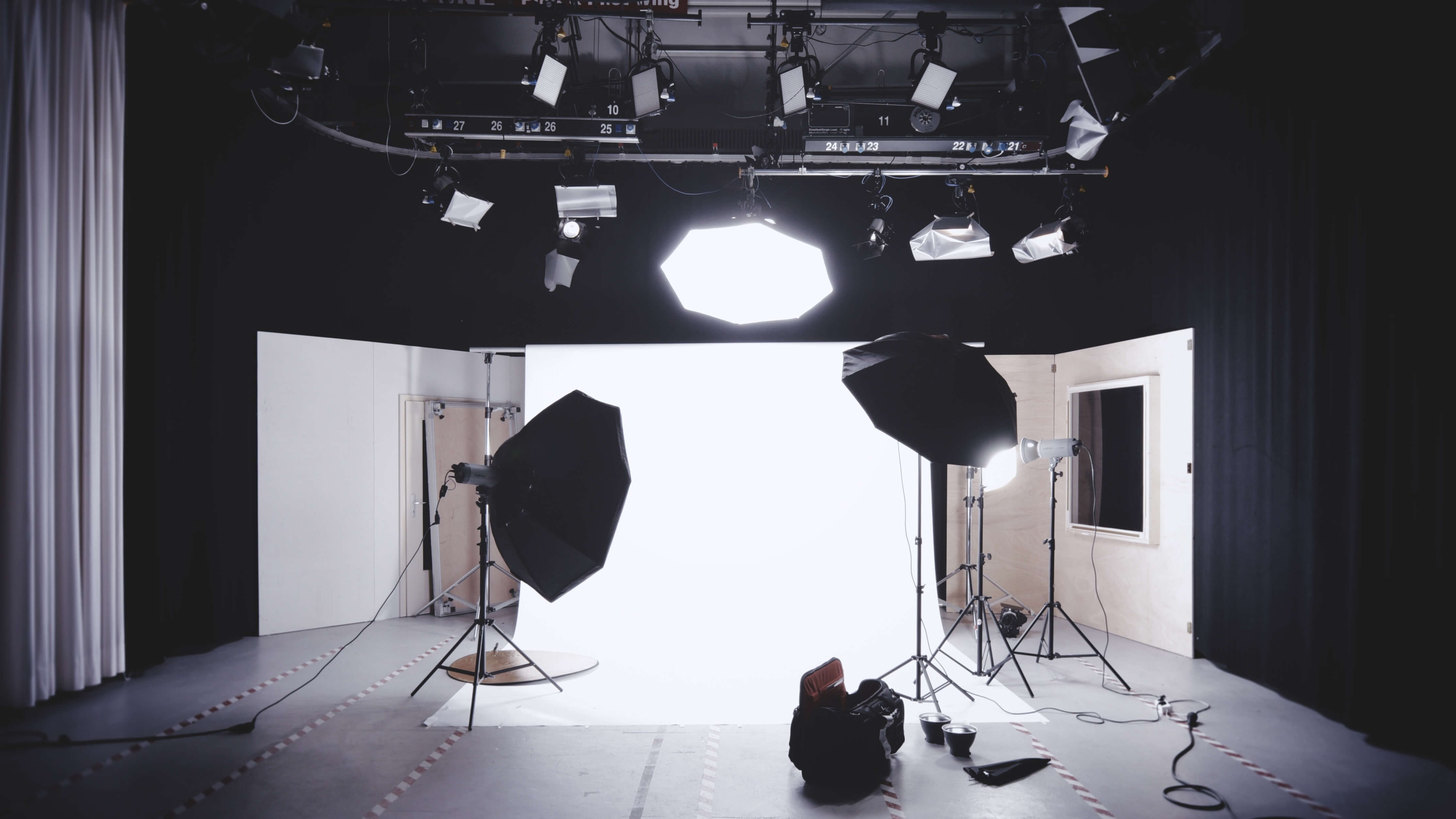It is impossible to overstate the importance of lighting for video production. The lighting completely changes how a shot looks, affects the mood, and directly influences the overall quality of a scene. If you’re not a professional videographer, look to a video production company for advice. You need to have a game plan for your lighting. Here are some of the essentials to get you started:
Equipment
According to Tubular Insights, key lights, fill lights and backlights (three-point lighting) will be your best friend while you’re shooting.
The key light is your first and most important light. This is used on the main subject of a shot. Its purpose is to “highlight the form and dimension of the subject.” It provides surface and forms details. Ideally, this lighting should be pointed 45 degrees upward and off the camera axis.
The fill light supports the key light. It’s considered a soft light that helps reduce some of the deep shadows on the face of any three-point lighting setup. It should be placed opposite of the key light, and pointed at a 30 degree vertical angle.
Lastly, the backlight is used to separate the subject from the background. Its main purpose is to provide depth. As opposed to the other lights, this one is placed directly behind the subject and on a 45 degree vertical angle downward. The backlight should be roughly 1.5 times brighter than the key light.
With “flat lighting,” the three lights are of equal brightness. This is often used for news broadcasts and the like.
There are also source lights, which are lights that are organically part of a scene. If there is a lamp, candle, window (ambient light), etc. in the shot, that needs to be accounted for when considering the rest of your lighting.
Angles
There are different angles at which you can direct light. This is especially prevalent when filming living beings (rather than scenery).
Amongst countless other things, lighting can establish power dynamics. When casting light from a high angle, it can create an angelic or sweet aura and make someone or something look important. It generates a spotlight effect and tells the audience where to focus their eyes.
Lighting from a low angle creates a dramatic effect. This is typically used to make someone look more powerful or intimidating. This is commonly used on villains in horror films.
Colors and Temperatures
“Lighting and color are part of the backbone of emotion,” says Danielle Feinberg, director of photography at Pixar. Different colored lighting has different meanings. If you choose a particularly unusual color, there needs to be logic behind it – it needs to flow with what’s happening on screen.
According to Film Education, colors like oranges and pinks portray warmth, while colors like blues and greys portray coldness. Darker colors like black and red can mean passion, anger, or danger, while white almost always means purity and innocence. Yellow can mean happiness and energy, green can mean jealousy, and the list goes on and on.
Pay attention to the different lighting choices in this Moonlight trailer. For example, the woman yelling at 0:48 is drenched in a neon pink and reddish light, starkly contrasted with 0:50 where the young boy stands there enduring her torment in a darker, more melancholy lighting.
“Moody lighting” is called just that for a reason – it is one of the biggest contributors establishing mood. Colored lighting is subtle and often overlooked by the audience, but is dire in creating the atmosphere of your scene. You can convey love, energy, depression – pretty much anything – with color. Choose wisely.
Severity of Light
There are different degrees of brightness. The two umbrella categories are hard light and soft light. Hard light can be compared to a very sunny day. It is sharp, concentrated light coming from a small source. This produces defined shadows.
Soft light, on the other hand, more closely resembles a cloudy day. It is diffused over a large space or area. This light is transmitted from a larger light source and hides surface detail. With softer light, there are fewer shadows and harsh lines.
There is also high key lighting, in which all of the three-point lights are being used at full blast with little room for shadows or depth. This is more often used for things like theatre performances.
Then there is low key lighting, which creates contrast, shadows and depth in your shots. You accomplish this by mostly using just your key light, with little use of your fill light and backlight.
Just like with colors, each of these creates a different mood. It all depends on what you want to achieve. However, soft light is the most forgiving and is used in most corporate circumstances.
These are just a few of the fundamentals of lighting. It is a complex, but important art that needs careful thought and consideration in every video.
Updated on January 24, 2020
Alanna Goodman, Marketing and Communication at Green Buzz Agency. Emily Herman contributed to this post.
